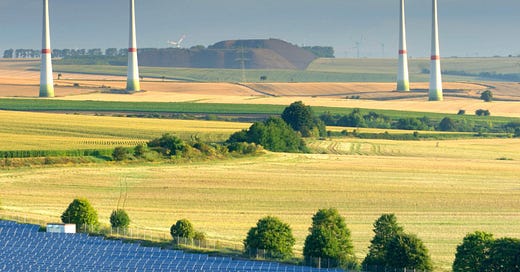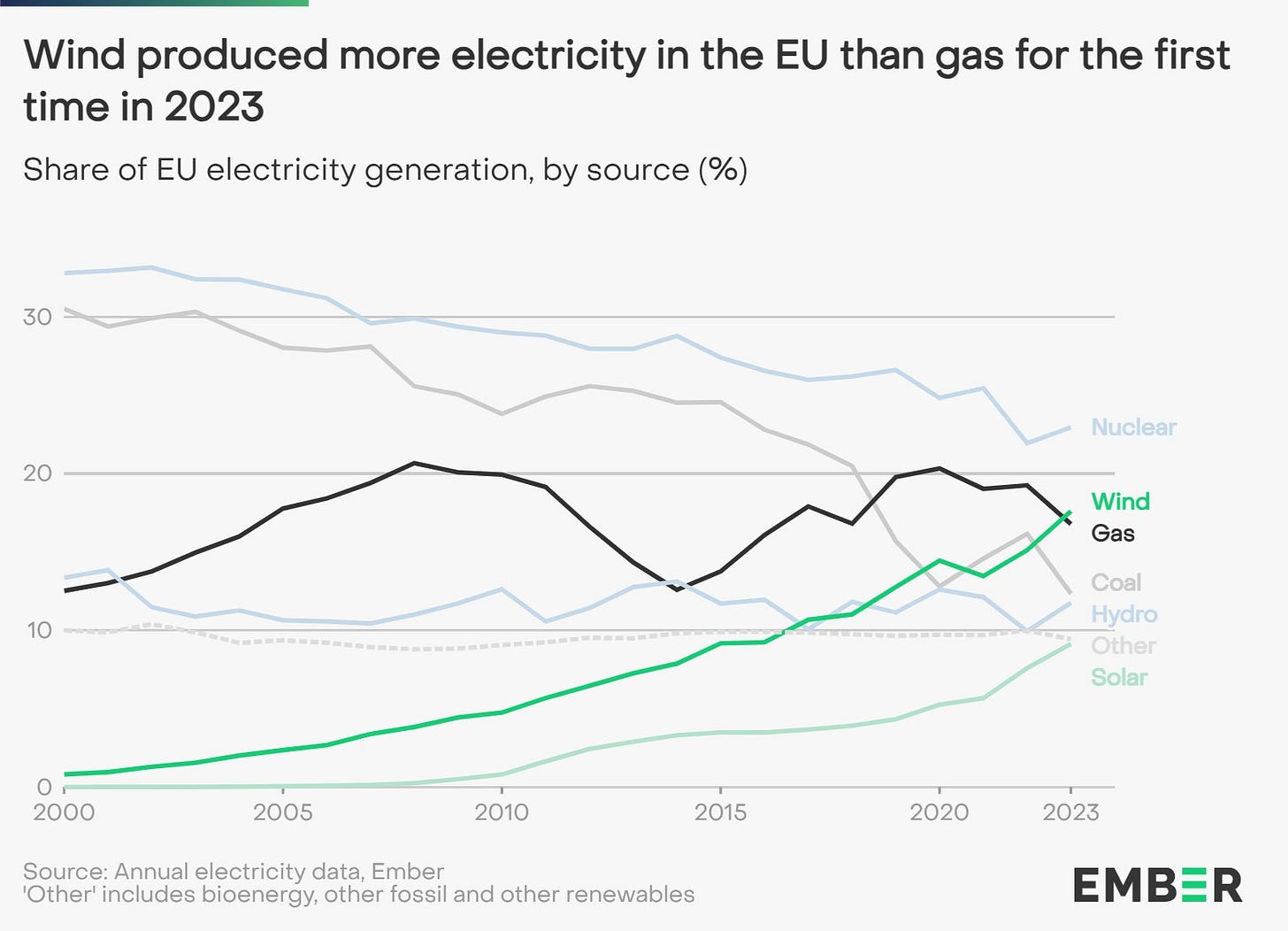Last year Europe produced more electricity from wind turbines than its fossil gas plants. Wind and solar produced a record 27% of the European Union’s electricity- above a quarter for the first time.
Need-to-Know: Coal generated a mere 12% of electricity in the EU last year
Contrary to lots of anti-renewable propaganda, Europe’s coal use fell to its lowest-ever level of 12% of electricity generation in 2023, according to statistics from energy think tank Ember.
Coal is rapidly being replaced by clean-energy sources, not fossil gas as often claimed. Gas use in Europe fell by 15% in 2023.
Need-to-Know: 44% of electricity in the EU is from clean energy sources
When hydro-power is added in, clean energy represents a record 44% of the EU electricity mix.
Europe’s transition to 100% clean energy is well underway. This will protect them from the rising costs and security risks from imported fossil fuels while cleaning the air of pollution.
The U.S. is also riding the clean energy wave.
Need-to-Know: Coal use in the U.S. is fading fast. Gas is next
Fossil fuel demand in the U.S. peaked 15 years ago, according to Kingsmill Bond, an energy strategist at RMI.
Nearly all U.S. coal plants were built over 30 years ago. Between 2010 and May 2019, 290 coal power plants closed, representing 40% of the U.S. coal generating capacity. By 2030 there will only be a small handful of coal plants left.
The same thing is beginning to happen with fossil gas plants that once provided 40% of U.S. electricity but will fall to 37% this year, according to the U.S. EIA. The main reason is the lower cost of wind and solar.
Need-to-Know: Wind and Solar becoming better and cheaper year after year
The already low costs of wind energy will decrease another 25% by 2030, while the cost of solar will be half of what it is today, say experts. How is this possible?
The reason for the year-after-year cost declines of solar and wind is that they are technologies, not commodities. As with all technologies, the more that are being made, the more is learned about how to make them better, faster, and cheaper.
Need-to-Know: Why fossil energy will always cost more
Fossil fuels are commodities that are dug out of the ground. Once all the easy-to-get stuff is gone, the costs go up by having to find and dig up the hard-to-get stuff like Canada’s tar sands and deep-sea drilling. Gas plants and refineries are complex and costly to build so very few are made limiting the opportunities for improvements and cost reductions.
Clean energy has lots of other benefits: greater energy security, less price volatility, lives saved from displaced fossil fuel pollution, and avoidance of the climate disasters that come with a much warmer world.
Need-to-Know: The fossil fuel industry is blocking clean energy
Despite all this, the transition to clean energy remains an uphill struggle. This is because a rich and powerful fossil fuel industry refuses to change its business model, and does everything it can to block the rollout of better, cheaper sources of energy, including pumping out piles of propaganda.
Until next time. Be well.
Stephen







How do we best combat the piles of propaganda??? O&G also owns our politicians, especially here in Alberta.